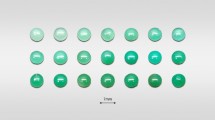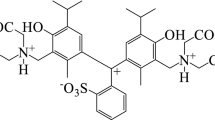Abstract
No satisfactory explanation of the colours of inorganic salts in the vapour state, in solution, or in crystalline form, has yet been put forward, excepting certain suggestions by Fajans (“Handbuch der Physik”, Bd. 24, p. 564), that the colours are due to the deformation of the cation produced by surrounding anions and molecular complexes. The ideas of Fajans were rather vague, but the time has now come to put forward a more precise hypothesis. It is well known that salts like NaCl, CaCl2, AlC3, in which the electrons of the cation form closed shells (p6), are colourless or white. Herzfeld found from a study of dispersion of NaCl that there are three ultra-violet absorption bands, one at λ340 which was ascribed to Na+, another at about λ1500, which was ascribed to Cl−-ion. This last one has been experimentally obtained by Pfund (Phys. Rev., vol. 32) by the Reststrahlen method. The wave-length λ340 ascribed to Na+ agrees remarkably well with the resonance line of Na+ identified by K. Majumdar (Ind. Jour. Phys., 1927) and Bowen, though definite assignment of values of the absorption wave-length from dispersion data in this region is subject to certain uncertainties.
This is a preview of subscription content, access via your institution
Access options
Subscribe to this journal
Receive 51 print issues and online access
$199.00 per year
only $3.90 per issue
Buy this article
- Purchase on Springer Link
- Instant access to full article PDF
Prices may be subject to local taxes which are calculated during checkout
Similar content being viewed by others
Author information
Authors and Affiliations
Rights and permissions
About this article
Cite this article
SAHA, M. Colours of Inorganic Salts. Nature 125, 163–164 (1930). https://doi.org/10.1038/125163b0
Issue Date:
DOI: https://doi.org/10.1038/125163b0
This article is cited by
-
Magnetic anisotropy and pleochroism of biotite mica
Proceedings of the Indian Academy of Sciences - Section A (1938)
-
Structure of Line Spectra in Crystals
Nature (1932)
Comments
By submitting a comment you agree to abide by our Terms and Community Guidelines. If you find something abusive or that does not comply with our terms or guidelines please flag it as inappropriate.



